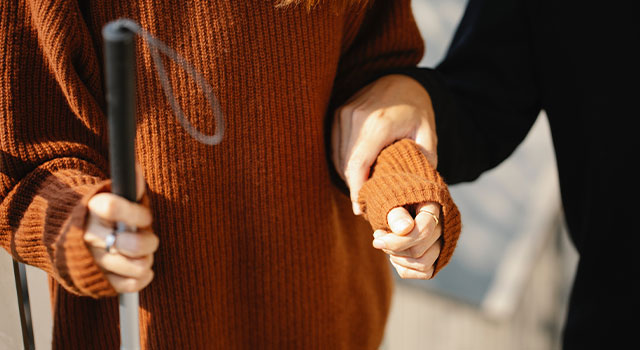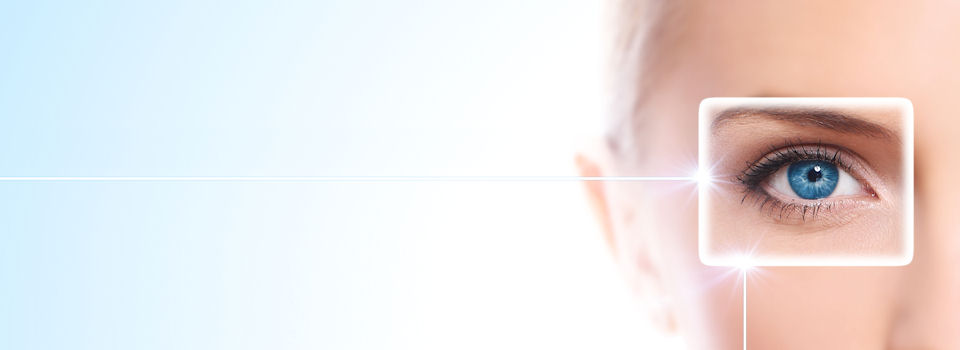
Being legally blind affects how you go about your daily tasks and how you navigate the world around you. Legal blindness is defined as having 20/200 vision or less. This means that an object that appears clear to a person with a perfect vision from 200 feet away, is only clear to a legally blind person at a maximum distance of 20 feet away.
Legal blindness is also defined as having a visual field of 20 degrees or less. Those with this type of vision have severe difficulties in mobility, yet see sharply with their central vision.
Depending on the underlying cause of your condition, you may experience a lack of color contrast, color distortions, loss of depth perception, difficulty with excessive glare, sensitivity to bright light or night blindness. Fortunately, there are steps you can take to keep doing the things you love, even with low vision.
Tips for Living With Vision Loss
Having low vision demands certain adjustments. Here are some tips to help you stay safe and be able to engage in the tasks you most enjoy.
Cooking Safety
Being unable to see a cutting surface or an oven rack can be dangerous, but there are several ways to adapt your cooking techniques.
- To avoid burns from reaching into a hot oven, use an oven rack grabber or long oven mitts. You can also place tape over the knobs for the back burners to avoid using them altogether, then you don’t need to reach over a potentially hot flame.
- Try to fry or grill foods with a small indoor air fryer or grill; it’s much safer than pan-frying on the stove.
- Instead of using your stovetop or oven, use a slow cooker.
- Use a pair of scissors instead of a knife to cut food and packaging.
Lighting
Ample lighting is crucial for people with significant vision loss. When lighting your home and work areas, remember to implement the following tips.
- Keep all rooms evenly lit so that your eyes don’t have to adjust to changes in lighting when walking from one room to another.
- Use compact fluorescent or LED bulbs instead of incandescent light bulbs. They’re more energy-efficient and produce a brighter light.
- Depending on your lighting needs, use task lamps that you can move closer or farther away from your work.
- When writing, avoid shadows by positioning your work lamp on the other side of your writing hand, with the paper sandwiched between your hand and the lamp.
Hobbies/Activities
Being legally blind doesn’t mean you have to give up on your favorite activities or hobbies. Here are a few tips to help those with low vision enjoy taking part in various activities and hobbies:
- Enjoy playing cards or Bingo? Purchase large print or Braille cards.
- Enjoy going to the movie theater? Ask whether they have an audio description service—headphones that play the sounds of the movie along with a narrator that describes the characters and scenes.
- Sports lover? Listen to sporting events on the radio. Radio announcers provide a more detailed description of the game.
- Enjoy arts and crafts? Use a tactile ruler or tape measure.
- Like sewing? Anchor your sewing needles in a cork or bar of soap to thread them.
Computer Use
Nowadays, computers offer many features to enlarge text or add contrast for easier readability. In addition, you can also:
- Purchase stickers to place over the keys on your existing keyboard
- Use a large print or Braille keyboard.
- Learn keyboard shortcut commands to help you rely less on the mouse pointer.
- Use additional accessibility software, like speech-to-text software or a screen reading program.
- Use a larger monitor.
While experiencing vision loss may at first seem like the end of the world, there are so many ways you can still live a full and productive life. People with low vision or partial vision can benefit from a variety of visual aids to maximize their remaining vision. Regardless of one’s degree of vision loss, a person can benefit from accessible smartphone apps, e-readers, and many other types of adaptive technology.
Contact Low Vision Optometry of Southern California to learn more about low vision devices, eyewear and technologies that can help you live life to the fullest. Our low vision optometrist will work with you and prescribe the best devices to suit your needs.
Q: What is low vision?
- A: An individual is defined as having ‘low vision’ if their fully corrected vision is insufficient to do what you want to do. Fortunately, there's hope for those with low vision. A low vision eye doctor can offer vision aids and devices to maximize remaining vision.
Q: What are low vision aids and devices?
- A: Low vision aids are a combination of special lenses and devices that maximize any usable vision to help patients recognize faces, watch TV, read and carry out daily tasks. Common low vision aids include low vision glasses like microscopes, telescopes, filters and prisms. There are also electronic visual aids and optical magnifiers.
- Low Vision Optometry of Southern California serves patients from Riverside, Orange County, Temecula, and Mission Viejo, all throughout California.


